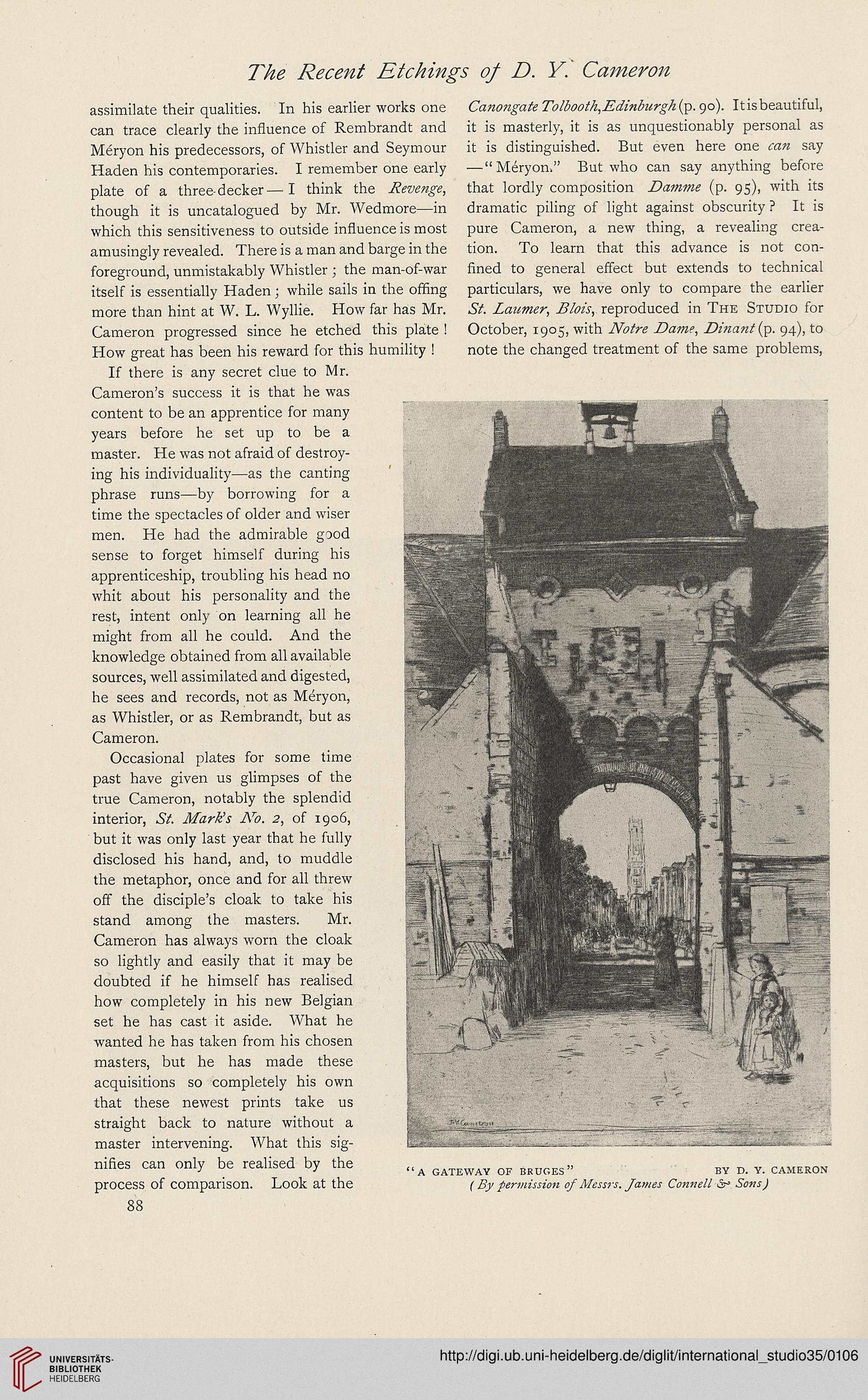The Recent Etchings of D. V. Cameron
assimilate their qualities. In his earlier works one
can trace clearly the influence of Rembrandt and
Meryon his predecessors, of Whistler and Seymour
Haden his contemporaries. I remember one early
plate of a three-decker—I think the Revenge,
though it is uncatalogued by Mr. Wedmore—in
which this sensitiveness to outside influence is most
amusingly revealed. There is a man and barge in the
foreground, unmistakably Whistler ; the man-of-war
itself is essentially Haden; while sails in the offing
more than hint at W. L. Wyllie. How far has Mr.
Cameron progressed since he etched this plate !
How great has been his reward for this humility !
If there is any secret clue to Mr.
Cameron’s success it is that he was
content to be an apprentice for many
years before he set up to be a
master. He was not afraid of destroy-
ing his individuality—as the canting
phrase runs—by borrowing for a
time the spectacles of older and wiser
men. He had the admirable good
sense to forget himself during his
apprenticeship, troubling his head no
whit about his personality and the
rest, intent only on learning all he
might from all he could. And the
knowledge obtained from all available
sources, well assimilated and digested,
he sees and records, not as Meryon,
as Whistler, or as Rembrandt, but as
Cameron.
Occasional plates for some time
past have given us glimpses of the
true Cameron, notably the splendid
interior, St. Mark's No. 2, of 1906,
but it was only last year that he fully
disclosed his hand, and, to muddle
the metaphor, once and for all threw
off the disciple’s cloak to take his
stand among the masters. Mr.
Cameron has always worn the cloak
so lightly and easily that it may be
doubted if he himself has realised
how completely in his new Belgian
set he has cast it aside. What he
wanted he has taken from his chosen
masters, but he has made these
acquisitions so completely his own
that these newest prints take us
straight back to nature without a
master intervening. What this sig-
nifies can only be realised by the
process of comparison. Look at the
88
Cano?igate Tolbooth,Edinburgh^. 90). It is beautiful,
it is masterly, it is as unquestionably personal as
it is distinguished. But even here one can say
— “Meryon.” But who can say anything before
that lordly composition Damme (p. 95), with its
dramatic piling of light against obscurity ? It is
pure Cameron, a new thing, a revealing crea-
tion. To learn that this advance is not con-
fined to general effect but extends to technical
particulars, we have only to compare the earlier
St. Lanmer, Blois, reproduced in The Studio for
October, 1905, with Notre Dame, Dinant(p. 94), to
note the changed treatment of the same problems,
A GATEWAY OF BRUGES” BY D. Y. CAMERON
(By permission of Messrs. James Connell or5 Sons)




